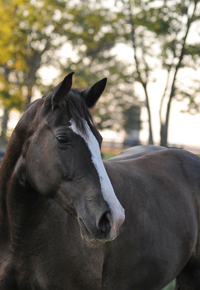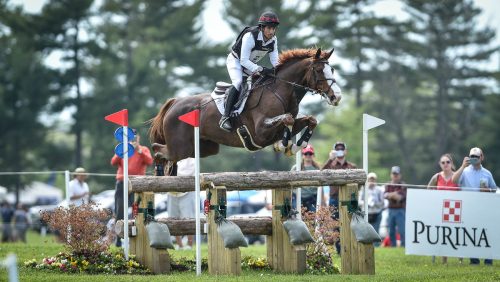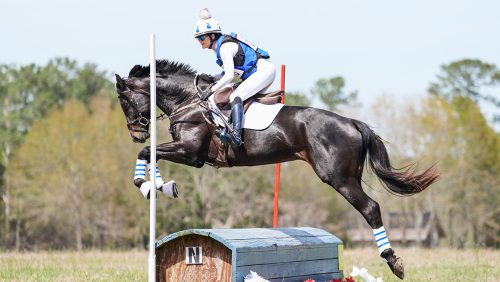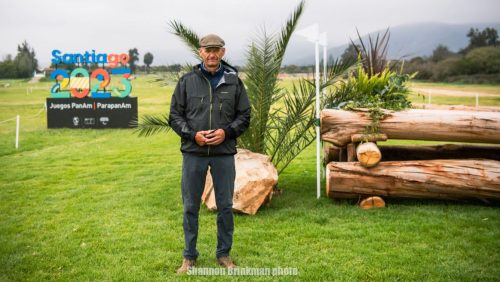After a brief hiatus from eventing, the Human and I have reunited with the red and white flags. A change of scenery means a change in the dressage test we’re practicing.
The one thing I understand best as a professional, highly sought-after writer is the power of the written word, as well as the power of the unwritten word. Dressage test authors and judges say as much with their brevity as they do in their instructions/feedback. The key is knowing how to interpret what they say.
I have to say the Human was very dramatic after reading the 2018 USEF Beginner Novice Eventing Test A. (Well, in fairness, she read the test, pulled up a diagram of the small dressage ring because she still hasn’t learned where the letters are, and then read the test again before groaning.) Personally, I love the BN A test. There’s so much room for interpretation and lots of room for learning.
Five years ago I was happy to share my thoughts on the previous generation of the BN A test, and while I don’t like to give away too many of my secrets, I feel it would benefit the four-legged training community to give you my inspired thoughts on the current version of the test.
1. A-X-M – Enter working trot
M – Track left
Jitterbug’s note: At this point, the Human is getting a look at the dressage ring for the first time. Remember that Bipeds’ vision is different than ours. Your Human will be sizing up the ring, planning out her turns and circles, but of course their depth perception isn’t as good as ours. She will begin asking for the left turn too late. You have the option, at that point, to hop out of the ring if you so choose.
2. E – Circle left 20 meters, working trot
I’ve always found “working trot” to be a highly individualistic concept. What Humans so often fail to realize is that any form of trot is work when you’re toting around a Biped whose nerves have by now reduced her to having all the balance of mashed potatoes. As long as you’re moving forward at this stage, no one can deem you as anything less than extremely kind.
3. Between K and A – Working canter left lead
When the Human read the test, it’s likely she misread this as simply “working canter left” and didn’t take note of the lead. At this point she’s so distracted wondering why the dressage ring letters aren’t in alphabetical order there’s a good chance she doesn’t get her trembling ankle behind the girth until C. The lead is very important however, so to demonstrate to the judge that she knows the difference, pick up the right lead to begin with and wait for her to correct you.
4. A – Circle left 20 meters working canter
ADVERTISEMENT
When she fails to correct your lead, the judge will have already docked her quite a few points. Since it’s too late to get them back, demonstrate to the judge your athleticism by counter-cantering with lots of suspension for 18 of the 20 meters. If the Human loses her stirrups during this portion, you can hope she’ll get bonus points from the judge for maintaining a stable seat and casually working her toes back in.
5. Between F and B – Working trot
When your rider fails to get her feet back into the stirrups, she will find the downward transition to trot here rather shocking. Your best bet is to walk so that she can catch her breath. Of course, the downside to going easy on her is that she may fall in a heap on your neck. Develop a nice forward walk here as a distraction.
6. Between M and C – Medium walk
This will be your best opportunity for the judge to get a close look at your Human’s turnout. If she has done a good job at this (by some miracle), I tend to throw the outside shoulder a bit here to make sure the judge gets a good look. If not, I wander contemplatively to the left and hope she is more interested in why we’re going off course than why the Biped’s boots are so dull.
7. H-X-F – Free walk
Finally, a break! By now I’m finding the teaching process quite exhausting and like to stretch down, relax my jaw and neck, and take the opportunity when crossing X to have a full-body shake. This is how the judge can see that I am truly unimpeded by any sort of rein contact (as by now, the Human has given all that up and is focusing on finding F).
I am truly free.
8. Between F and A – Develop medium walk
Freedom is now over, certainly forever, as the Human picks up rein contact again. In this corner, I typically begin thinking about what lessons I want her to take away from this test. Am I being too easy on her? She has now had half a test to overcome her nerves, and I can’t keep covering for her. This is the point where I encourage her to become a rider and not a passenger.
9. K – Working trot; E – Circle right 20 meters working trot
This is a good place to point out that circles do not just happen. They are planned and executed carefully. If they are not planned with the right degree of pressure and release from the inside leg to outside rein, they may resemble eggs. Or rectangles. Or octagons. Bonus points if you can do a figure eight at E.
ADVERTISEMENT
10. Between H and C – Working canter right lead
Of course, by now they’ve already seen the right lead, so this seems like a good time to pick up the left.
11. C – Circle right 20 meters working canter
Notice how it doesn’t specify that you do this on the right lead.
12. Between M and B – Working trot
I always thought this test should require the Human to ask for the transition at a specific point, rather than in a range. They’re far too easy on them at this level. I like to drive this home by waiting to do the transition around B, provided the Biped asks correctly with shoulders back, aligned over hips and ankles, soft inside rein, quiet outside rein, and transition with gentle support from leg. And lots of praise. Simple stuff, really.
13. K-X-G – Onto centerline
Remember, her depth perception is her Achilles’ heel in situations like this. Make sure the judge realizes that she knows where the centerline is by overshooting it and giving her the opportunity to correct.
14. G – Halt through walk, salute
I like to finish my tests as strongly as I begin them. Sometimes that means finishing with a buck and a flourish (quite the athletic feat out of a working trot). Sometimes I take the opportunity to bow my head in apology. My favorite go-to move, however, is to underscore the difficulty of my work by heaving an enormous sigh. That seems the best way to sum it up.
 |
Jitterbug is a Michigan-bred Professional Draft Cross who skillfully avoided saddles until age 5. Since then, she has been lauded for her talent in successfully managing humans while training herself to one day achieve eventing greatness. Jitter and her human live in central Kentucky. Read all of Jitter’s COTH columns. Follow Jitterbug on Facebook! Photo by Dark Horse Photography. |















